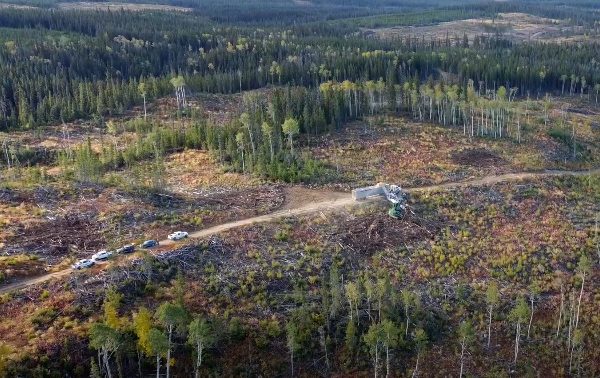Responsible Sourcing is one of the most important elements of sustainability addressed in The Power of Pellets video series produced by the Wood Pellet Association of Canada and Forestry Innovation Investment. Through the eyes of the on-the-ground registered professional foresters, who walk the sustainability talk in British Columbia’s forests, we see firsthand how these champions are ensuring wood pellets contribute to a sustainable future for our forests and our planet.
Canfor’s Sara Cotter, forest management system and tenures co-ordinator, tells how “the pellet industry is sustainable in the long term, even with growing demand, because the forests are managed sustainably through both meeting legal requirements as well as maintaining certification.”
The wood pellet industry ensures that not only 100 per cent of the harvested tree is utilized, but that the whole tree is processed to extract its highest value, with quality logs heading to the sawmill, “and then lower quality logs can go to chips or to other residual uses such as wood pellets.”
“When the log comes out of the forest in round numbers 50 per cent of that log goes into producing lumber,” explains Walter Matosevic, group general manager for residual fibre, Canfor. “The other 50 per cent are residual products: 30 to 40 per cent is going into chips for the pulp business and then the remaining is in the form of sawdust and shavings and bark, which primarily goes into this pellet.”
The Forest Enhancement Society of BC’s Steve Kozuki tells how wood pellets are helping mitigate climate change through improving the management of greenhouse gasses by turning fire damaged wood into pellets, an increasingly important issues since the province’s catastrophic fires last summer. This damaged wood is very difficult or sometimes impossible to use for pulp, which is the dominant use of secondary fibre in British Columbia. “The good news is the pellet sector can use that fire damaged wood, from the low-quality fire damaged forests in British Columbia.”
Director of sustainability for Drax, Joseph Aquino, emphasizes, “We’re talking about waste materials…that come from sawmill residual… Previous to the wood pellet industry in Western Canada a lot of this material would get burnt at roadside or incinerated in large beehive burners, contributing to an immediate GHG emission.”
Additionally, certification proves on a global market scale that wood pellets come from a sustainable source. “We can take pride in knowing that at the end of the day, [for] the customers requesting sustainable products, we can provide that to them,” says Skeena Sawmills and BioEnergy’s operational supervisor and certification co-ordinator, Jessica Hochins, who also takes great pride in her work. “I want to see a future for us for generations to come and I can make that happen on the ground.”
Watch the full Responsible Sourcing below:
Gordon Murray is the executive director of the Wood Pellet Association of Canada.
This article was originally published by Canadian Biomass, a national media brand providing coverage of the emerging biomass, bioenergy and bio-products markets. See CanadianBiomassMagazine.ca for more information.

